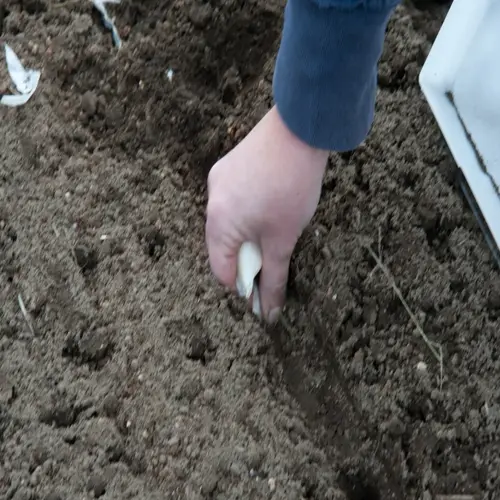What's the best fertilizer for lettuce?

Written by
Paul Reynolds
Reviewed by
Prof. Samuel Fitzgerald, Ph.D.Proper fertilization of lettuce keeps heads crisp and healthy, with minimal leafiness and little to no bitterness. First, use a balanced fertilizer such as a 10-10-10 fertilizer mix into the soil before planting. This will provide an equal supply of nitrogen, phosphorus, and potassium to establish strong roots. In three weeks, use fish emulsion, which is nitrogen-rich, and that is when leaf growth begins as the plant transitions to above-ground growth. Container-grown lettuce can be fed a liquid seaweed tonic every two weeks that provides trace minerals. Don't over-fertilize; lettuce will produce soft heads and add more nitrates in the edible leaves.
Timing and Frequency
- Initial application: Incorporate 10-10-10 at 2 cups per 100 sq ft during bed preparation
- Established plants: Apply fish emulsion every 21 days until harvest
- Container feeding: Liquid seaweed every 14 days for micronutrients
- Stop fertilizing 10 days before harvest to reduce nitrates
Organic Alternatives
- Compost tea: Brewed 24 hours, applied weekly as nitrogen source
- Alfalfa meal: Mixed into soil at planting for slow-release nitrogen
- Worm castings: Top-dressed around plants monthly for balanced nutrition
- Seaweed powder: Dissolved in water for container feeding every 2 weeks
To ensure optimal absorption, use fertilizers properly. Granular fertilizers should be worked into the soil about 4 inches deep before planting. Liquid fertilizers can be diluted in water and applied directly to the soil surrounding plants. Avoid using liquid fertilizers on the leaves to prevent burning. Water in thoroughly after application to promote nutrient distribution. To reduce the chance of evaporation loss, use it in the early morning.
Identify nutrient deficiency symptoms: pale leaves are a sign of nitrogen deficiency, purplish colors signal phosphorus deficiency, and brown edges indicate potassium deficiency. Use nutrients immediately and appropriately to treat. Use fish emulsion for nitrogen issues. Bone meal for phosphorus problems. Wood ash delivers potassium quickly.
Adapt fertilization to growing conditions. Sandy soils require more frequent feeding than clay soils. Heat will increase nutrient demands, while cool temps will lower them. Plants in containers need a higher dilution rate than those in garden beds. Always check the soil pH annually, as acidic conditions below 6.0 can inhibit nutrient uptake.
Avoid problems with over-fertilization such as soft heads or the buildup of nitrates, measure applications accurately with measuring cups. Never apply more than the recommended rates. If crusts of salt or stunted growth occur, flush the soil with water. Keep a record of feedings to help maintain a consistent schedule and prevent overlapping feedings.
Read the full article: When to Plant Lettuce: Ultimate Growing Guide
